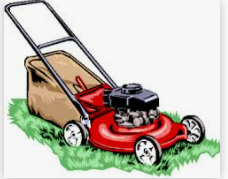Information
-
Contractor
-
Job Location
-
Conducted on
-
Prepared by
-
Location
-
Personnel
Induction Details
-
Are all staff inducted to be on site and displaying their contractor ID?
-
Optional: Take photo of work site
1. Working at Heights
-
1.1. Have all risks of fall been identified? (including voids, pits, and trenches)
-
1.2. Are all the identified controls implemented?
2. Plant and Equipment
-
2.1. Is all plant/equipment in good working order (including missing or damaged guards)?
-
2.2. Is the correct plant /equipment being used for job? (e.g. grinding discs for cutting)
-
2.4. Are all persons qualified and competent to operate equipment?
-
2.8. Is all equipment on site in Service? (Are leads tagged, have harnesses been tagged)
3. Scaffolds
-
3.2. Is the scaffold complete and are appropriate scafftags attached where required?
-
3.5. Are Safe Work Loads (SWL) displayed and adhered to? (tools, stored materials, number of persons)
4. Ladders
-
4.1. Have ladders been inspected/ maintained?
-
4.2. Is ladder set up safely and secured ( e.g is the ladder tied off, is there a stable base footing the ladder?)
-
4.3. Is the Ladder suitable for job? (e.g. metal ladder used for electrical work)
5. Hazardous Chemical (including fuel and oil)
-
5.1. Are all chemicals stored in a safe location? (e.g. flammables near ignition sources, spills could enter stormwater drains, etc)
-
5.2. Is there adequate spill containment equipment?
-
5.3. Are Safety Data Sheets accessible on site and available?
-
5.4. Is there emergency procedures for injury/spills/fire etc?
-
5.5. Is there sufficient and correct, PPE?
-
5.6. Is the equipment in suitable storage containers? (unlabeled or stored in food containers)
6. Emergency Response
-
6.1. Are the Emergency procedures known to all and documented?
-
6.2. Is there available first aid kits for site?
-
6.3. Are there formally trained First Aiders for all shifts?
7. Traffic Management
-
7.1. Is there an adequate Traffic Management Plan (TMP) in place?
-
7.2. Are all persons on site aware of the TMP?<br>(contractors and visitors)
-
7.3. Are there sufficient controls available for TMP? (physical barriers, bollards, speed limits, flashing lights, spotters, etc)
8. Personal Protective Equipment (PPE)
-
8.1. Is there adequate PPE (including sun protection)
-
8.2. Is there a system to issue, inspect, replace and monitor PPE?
-
8.3. Is there training in the safe use, clean-up and inspection of PPE?
9. Work Environment
-
9.1. Are staff aware of appropriate amenities? (toilets, wash areas, lunch rooms, etc)
-
9.2. Is there sufficient lighting for the works?
-
9.3. Is there adequate housekeeping?
-
9.4. Is there adequate noise/ vibration control?
10. Electrical Hazards
-
10.1. Are all electrical leads safe ( not damaged, in test date or tested)?
-
10.2. Is there RCD protection?
-
10.3. Are Leads placed appropriately ( not on ground or on metal structures)?
-
10.4. Are there Lock-out/tag-out (LOTO) procedures for electrical equipment and have they been implemented where required?
11. Environmental Hazards
-
11.1. Is there an adequate dust control system?
-
11.2. Is there adequate controls in place for run-off/ environmental spills
12. Administrative Procedures
-
12.1. Have the necessary permits (Council, EPA, WHS, also Hot Works, Confined Space etc) been obtained?
-
12.2. Have all inductions been completed for workers, contractors, visitors?
-
12.3. Are there adequate Safe Work Method Statements (SWMS) for high- risk work?
-
12.4. Are there adequate systems to review SWMS as needed?
Corrective Actions
-
Enter any corrective actions that will be undertaken
-
Enter any additional comments or positive Observations.
Sign Off
-
On site representative
-
Auditor's signature








